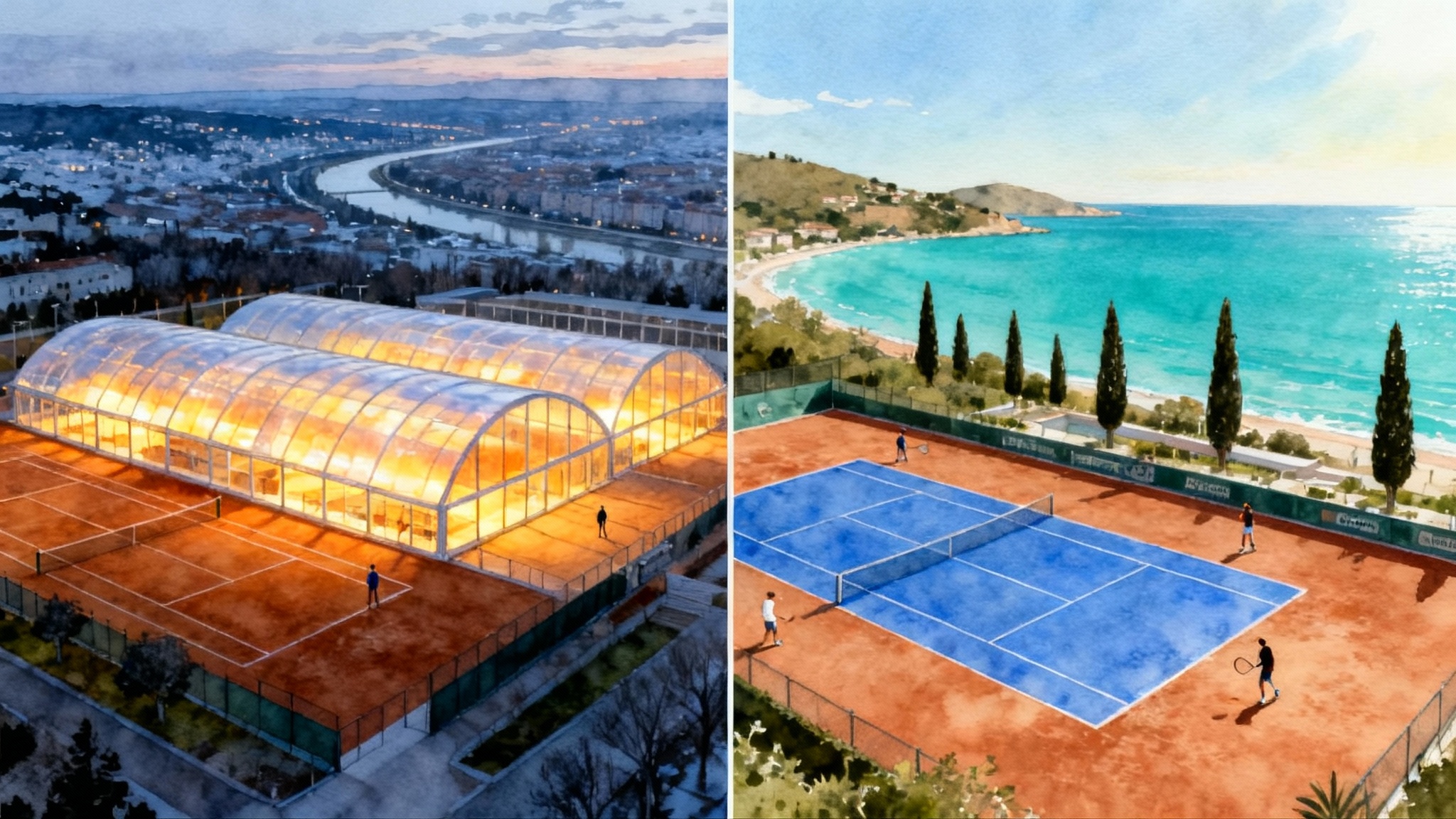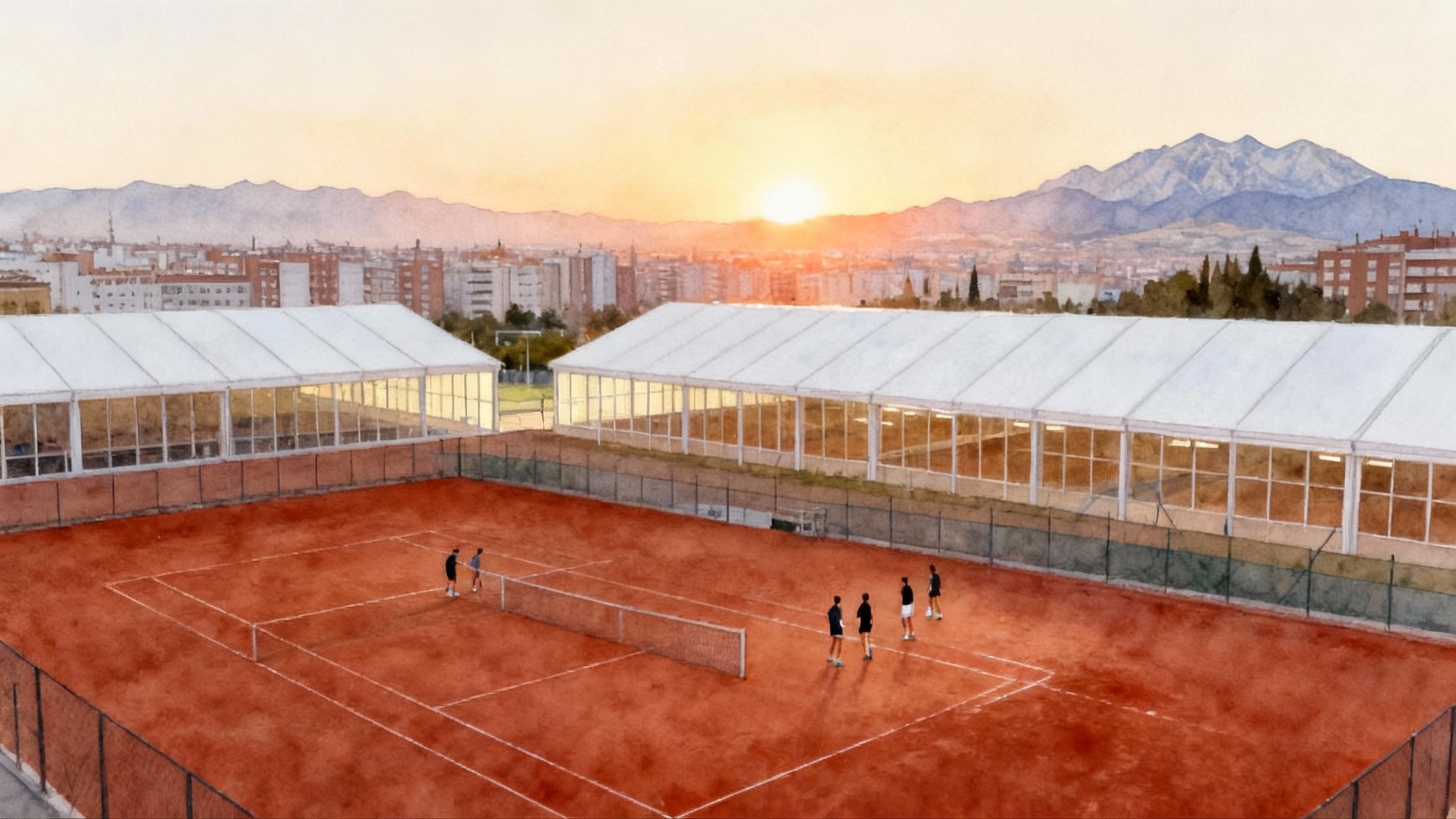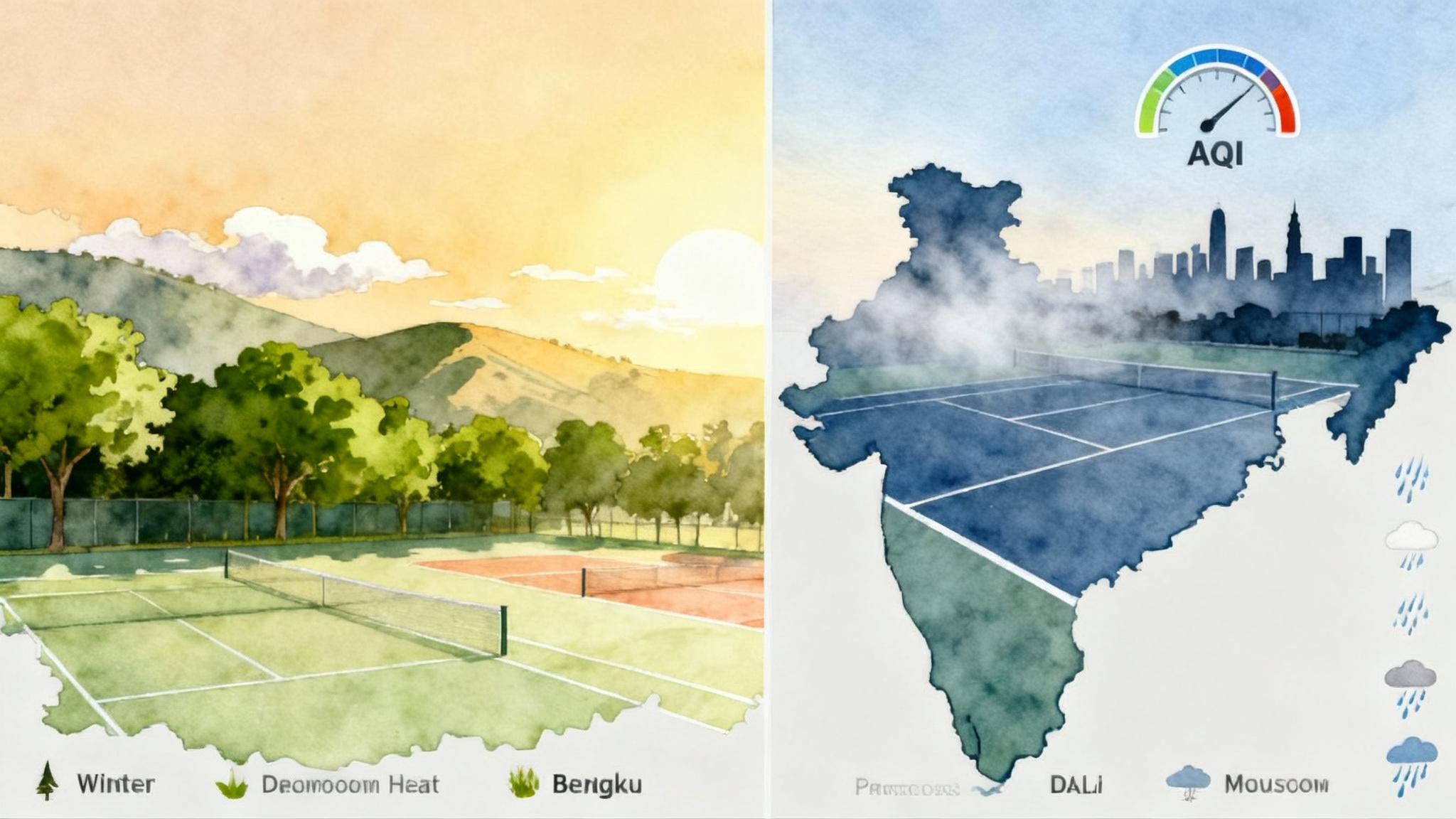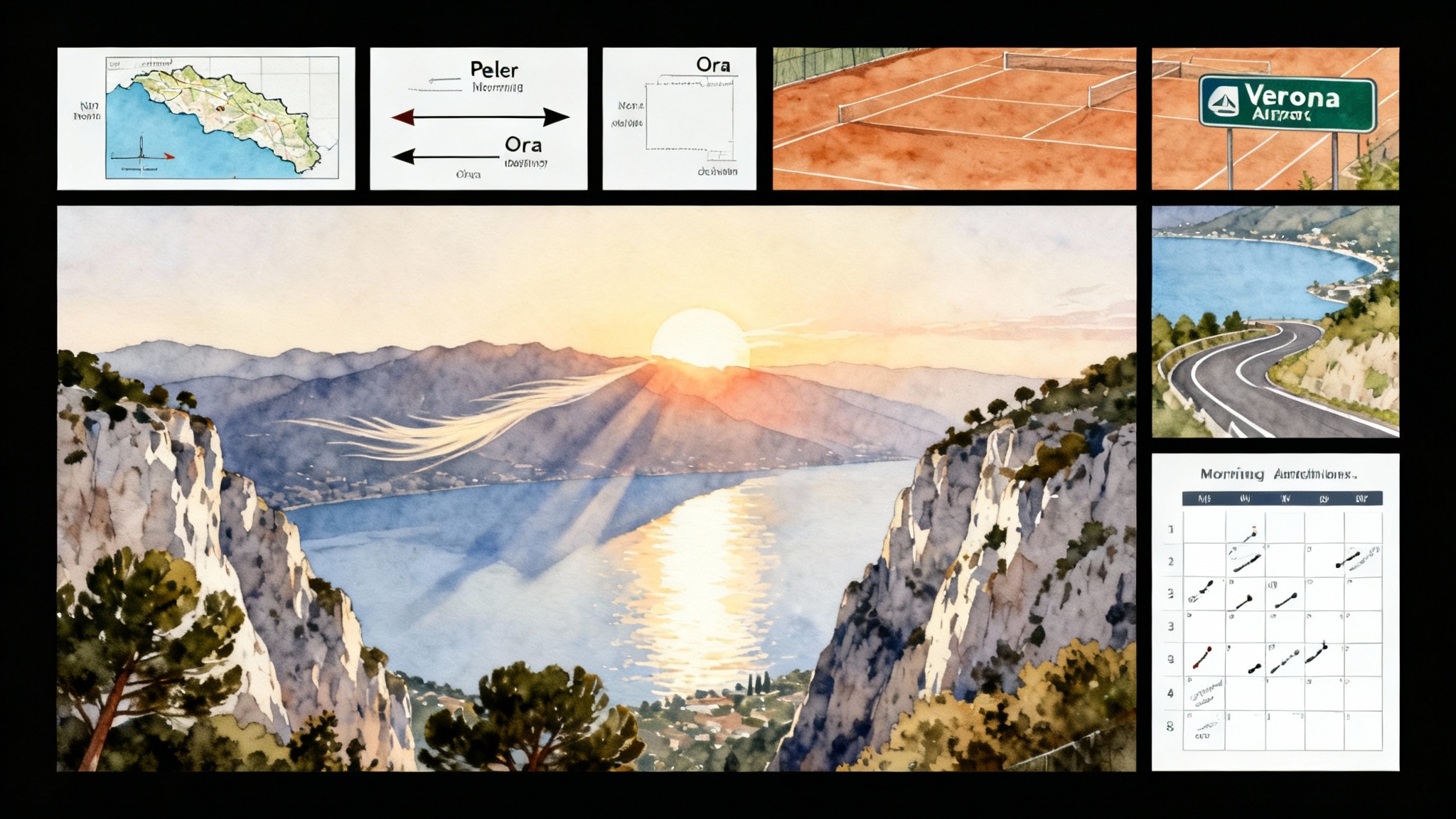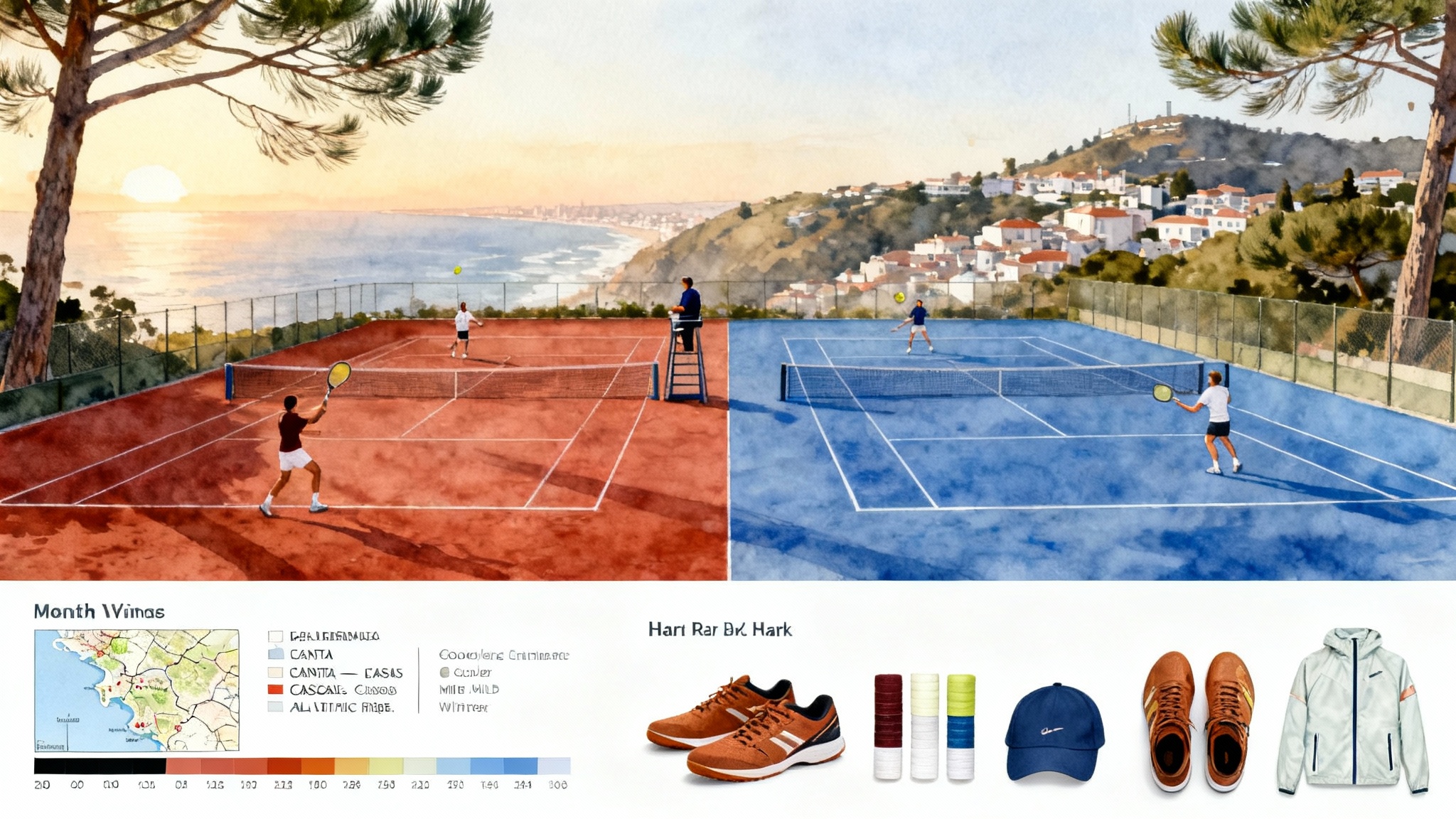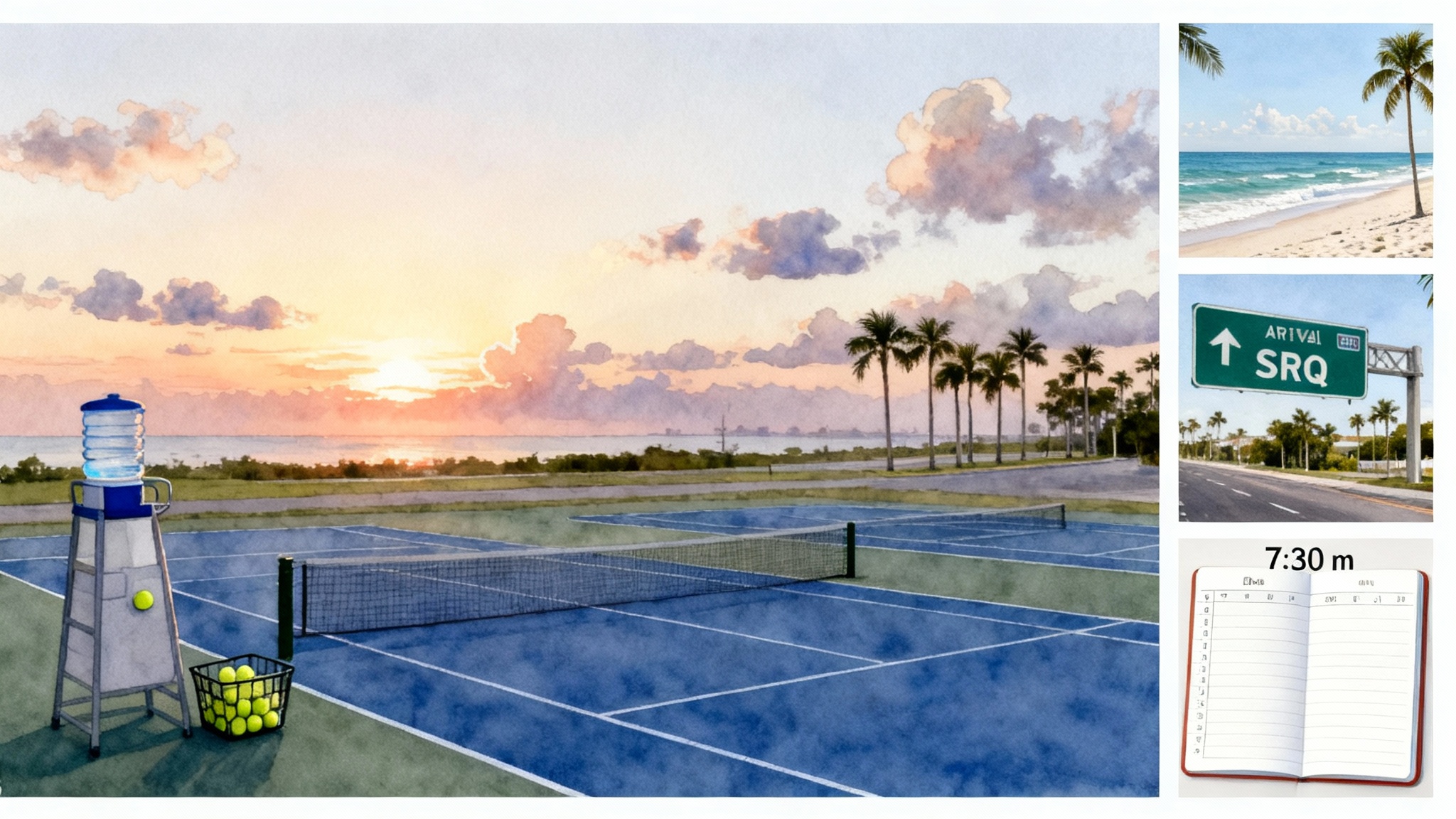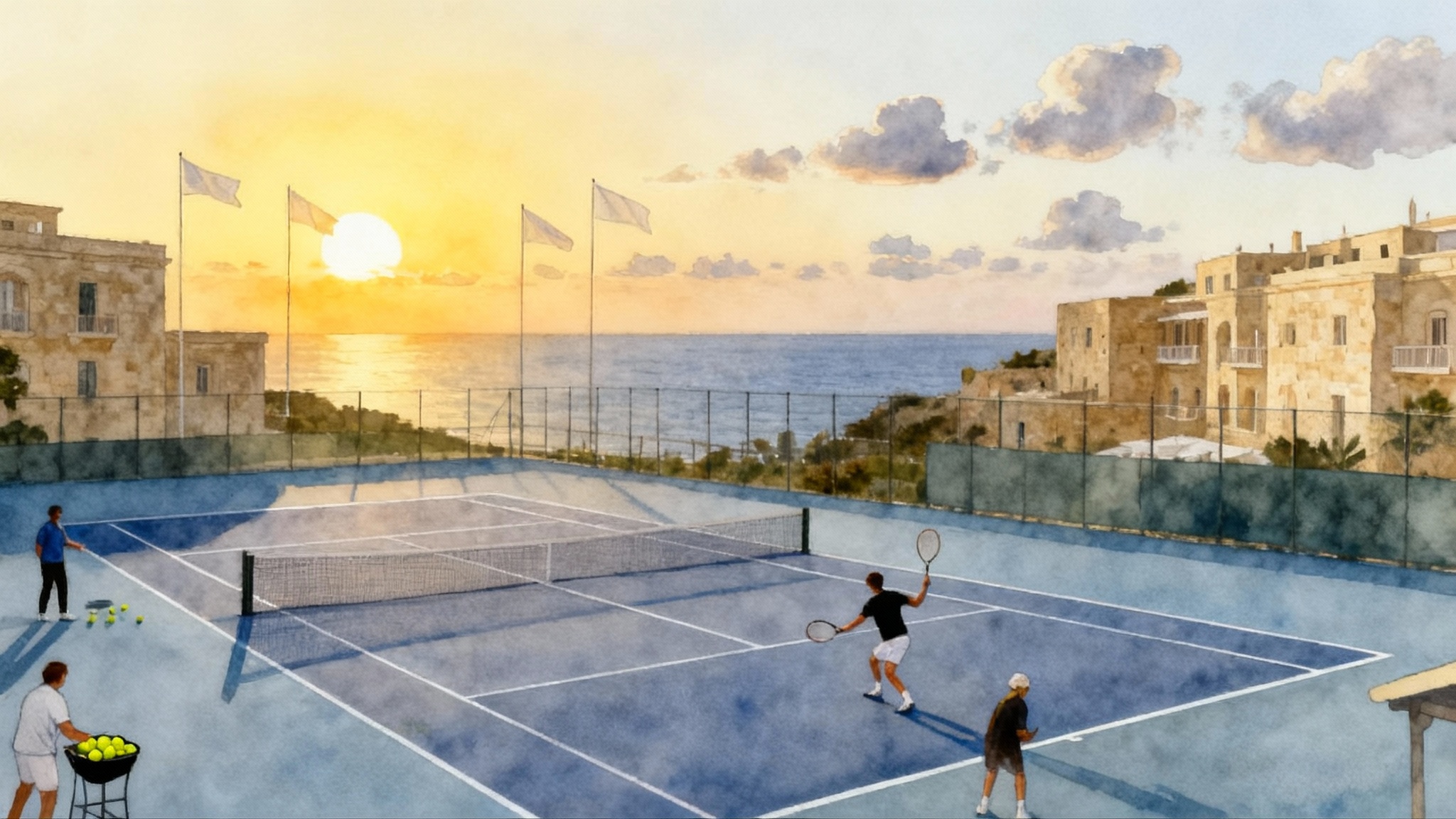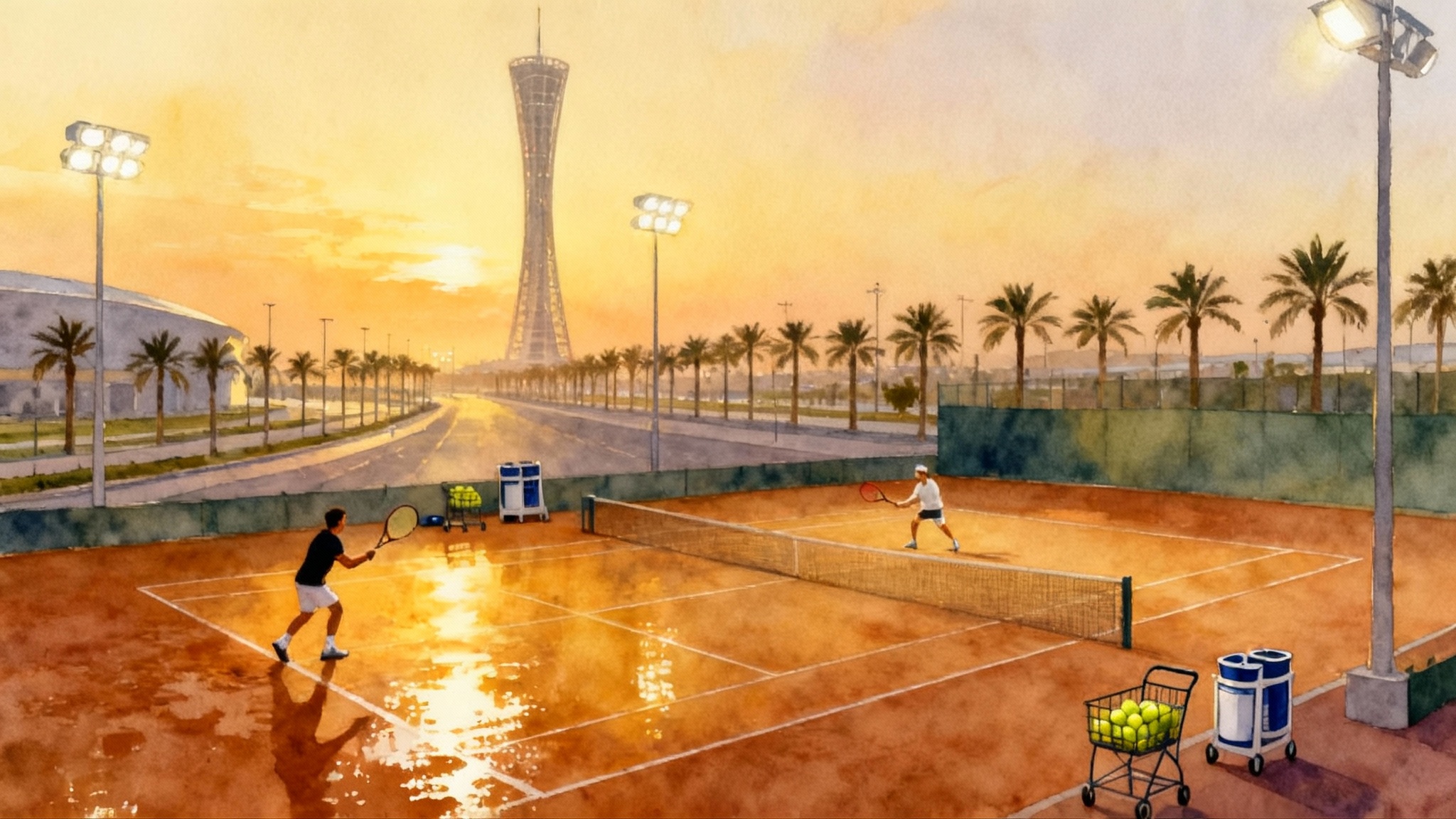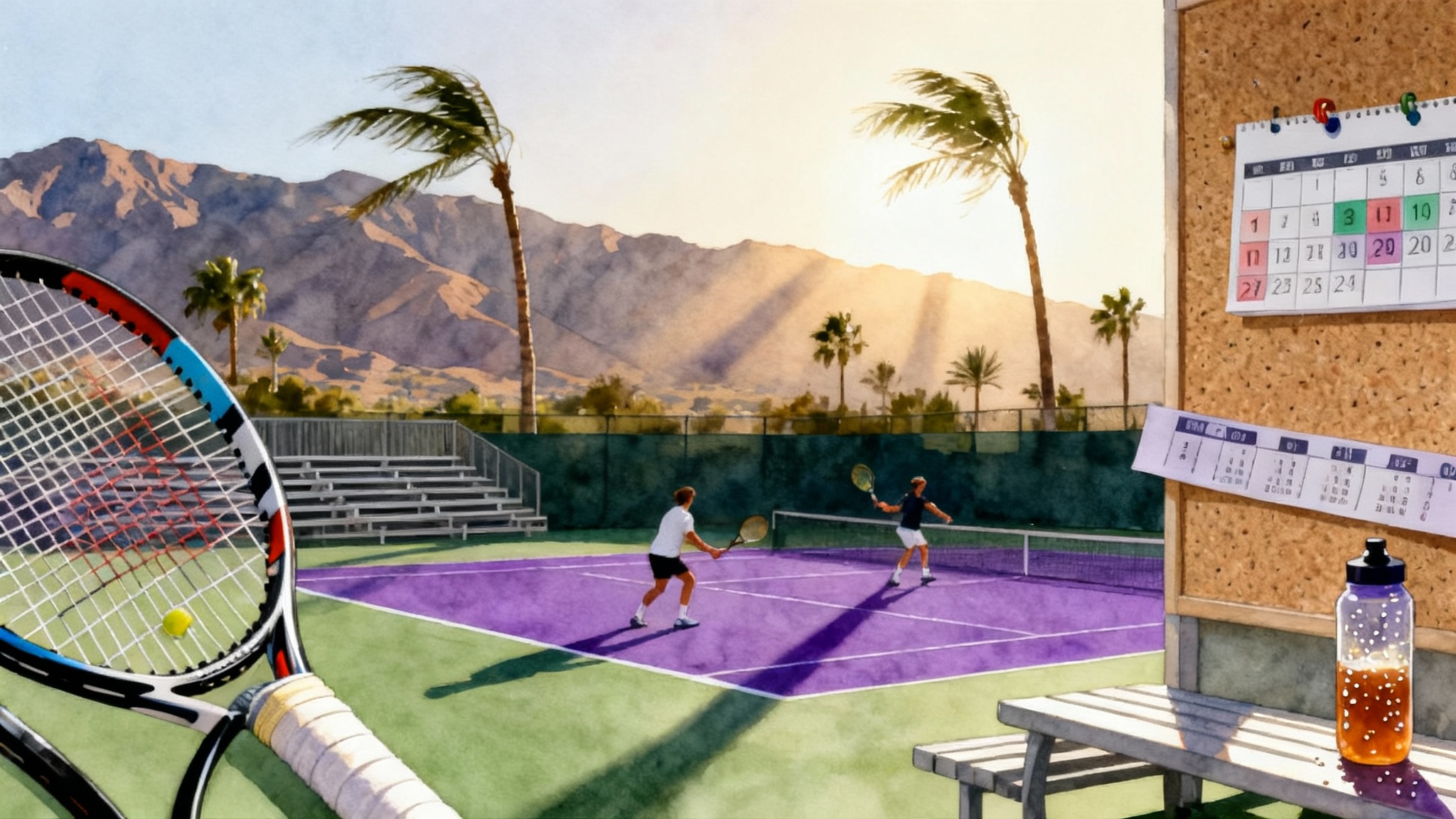Tenerife vs Madeira: Europe’s Best Winter Tennis Bases 2025-26
Planning a winter training block in Europe for 2025 to 2026? This head to head guide compares Tenerife and Madeira on microclimate, court surfaces, covered options, travel logistics, budgets, clubs, and day by day itineraries.
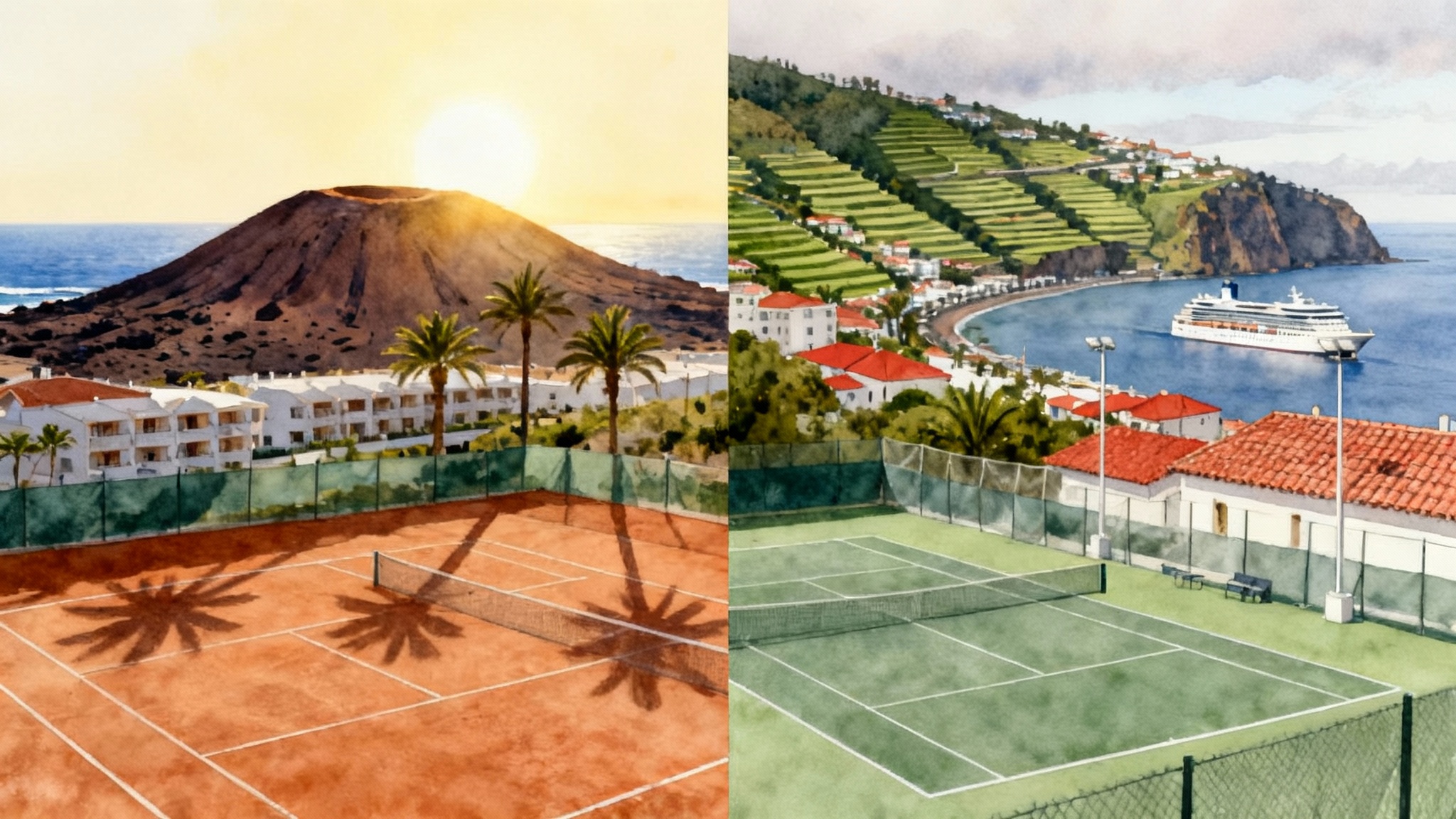
The big question
You have two Atlantic islands with loyal tennis followings and very different personalities. Tenerife, the largest of Spain’s Canary Islands, sits closer to the Sahara than to Madrid and leans dry and sunny in winter. Madeira, Portugal’s garden island, is greener, steeper, and a touch wetter but mild all year. If you are booking a serious training block between November 2025 and March 2026, your choice affects how often you play, what surface you train on, and how smooth your logistics feel.
This guide compares Tenerife and Madeira on the factors that matter to players and coaches: microclimate, surface mix, covered courts, travel, costs, and weekly planning. At the end you will also find a quick benchmark against mainland Spain and Portugal so you can judge weather certainty with clear eyes.
Microclimate head to head
Microclimate is the single biggest variable. Think of winter tennis like reliability engineering. You want to reduce your risk of weather stoppages to near zero while avoiding wind and humidity that can distort ball flight.
Tenerife: dry south, mild north
- Temperature: Expect daytime highs around 68 to 75 degrees Fahrenheit, roughly 20 to 24 degrees Celsius in the south coast resorts from Costa Adeje to Los Cristianos. Nights sit near 60 degrees Fahrenheit, about 15 to 16 degrees Celsius. The north coast is a few degrees cooler.
- Rain: The south is shielded by Mount Teide. In a typical January you might see only a couple of wet days, often passing showers. The north can get more frequent rain, especially on the slopes above Puerto de la Cruz. See the official Spanish meteorological normals at the AEMET climate data portal.
- Wind: Trade winds usually blow northeast. South coast tennis areas are less exposed than the kite beaches near El Médano. Expect a gentle to moderate breeze most afternoons. Courts nestled behind hotels or terraced walls play calmer.
- Sunshine and humidity: High sunshine hours with moderate humidity. Balls do not fluff up excessively, and clay dries quickly after a shower in the south.
Madeira: mild and green, with passing Atlantic fronts
- Temperature: Daytime highs commonly reach 63 to 68 degrees Fahrenheit, about 17 to 20 degrees Celsius at sea level in Funchal. Nights hover near 57 to 61 degrees Fahrenheit, about 14 to 16 degrees Celsius.
- Rain: Madeira’s winter is wetter than Tenerife’s south. Showers roll in with Atlantic systems, often brief in Funchal but heavier on the north and east coasts and at elevation. For baseline numbers, check the Portuguese meteorological normals at the IPMA climate normals hub.
- Wind: Hills and ravines funnel wind. Funchal’s amphitheater shape gives many courts decent shelter, yet gusty days happen when fronts pass. North coast towns feel windier.
- Sunshine and humidity: Plenty of bright intervals between showers. Humidity is higher than Tenerife, which players with elbow issues sometimes find more comfortable.
Verdict on weather certainty
- If you want the lowest possible rain risk across a full week, Tenerife’s south coast wins. Many coaches plan long blocks there specifically to avoid rain days.
- If you prefer cooler temperatures, dramatic scenery, and do not mind the odd shower, Madeira offers great playing conditions with a softer feel.
For another island option with strong winter reliability in the central Mediterranean, see our Malta winter tennis guide.
Surfaces, covered courts, and facility style
The surface you train on determines footwork patterns, balance, and timing. Winter is the perfect time to reinforce fundamentals, so match your goals to the island.
Tenerife
- Surface mix: A strong spread of outdoor hard and clay courts, with hard courts more common in resort zones. Clay options exist in the south and north, useful for building point construction and defensive movement during winter blocks.
- Covered courts: Permanent indoor or fully covered courts are rare. Temporary bubbles appear occasionally but cannot be relied on during 2025 to 2026. Plan for outdoors and build a wind plan.
- Facility style: Larger multi court resorts and training centers are typical. Expect well lit courts for evening sets, in house stringing, and pro shops with common poly and multifilament reels.
Representative clubs and academies on Tenerife include:
- Abama area training centers on the west coast, known for immaculate courts and a quiet luxury setting.
- Tenerife Top Training and other high performance friendly sites in the south for squads and fitness add ons.
- Costa Adeje and Los Cristianos resort clubs that sell court time by the hour and offer holiday coaching blocks.
- Historic member clubs in Santa Cruz and Puerto de la Cruz for a more local flavor and clay options.
Madeira
- Surface mix: Mostly outdoor hard courts in and around Funchal, with pockets of clay in traditional clubs. The inventory is smaller than Tenerife, so pre booking is essential in peak weeks.
- Covered courts: True indoor courts are limited. Some clubs offer partial wind breaks and high walls that create a calmer microclimate, but these are not fully weather proof. Bring a wet weather contingency like video analysis or indoor strength sessions.
- Facility style: Community centric clubs with beautiful garden backdrops and city parks. Expect friendly pro teams, a bit less inventory at peak times, and a relaxed rhythm that suits technical rebuilds.
Representative clubs and academies on Madeira include:
- Funchal city clubs in park settings, convenient to hotels and waterfront apartments.
- Multi sport clubs linked to established Madeiran institutions with access to fitness rooms and physio.
Practical surface advice
- Hard court blocks suit players sharpening first strike patterns and serve plus one plays before spring events.
- Clay blocks on Tenerife help transition toward European clay season without full cold weather exposure. A two week block with alternating hard and clay is a powerful hybrid.
- Madeira’s hard courts and gentler temperatures are kind to joints. For injury return to play, Madeira’s mild air and calm park settings can lower stress while you rebuild volume.
Travel logistics for winter 2025 to 2026
Logistics influence how much energy you have left for tennis. Simpler routes and predictable transfers often beat marginal weather gains.
Flight access
- Tenerife: Two airports. Tenerife South serves most leisure routes with frequent direct flights from the United Kingdom, Germany, the Netherlands, Scandinavia, and other European origins. From North America you will connect, typically via Madrid, Barcelona, Lisbon, or a major European hub.
- Madeira: Funchal is the single airport. It has daily links to Lisbon and Porto plus a rotating schedule of European services from the United Kingdom, Germany, France, and Central Europe. North American travelers connect via Lisbon, Porto, Madrid, or a Northern European hub.
On island movement
- Tenerife: The south is spread out but easy. A compact rental car saves time if you are moving between hotel, courts, and supermarkets. Taxis are plentiful and reasonable for short hops. The TF 1 motorway makes west to south coast transfers smooth if you avoid rush hours.
- Madeira: Funchal is compact, but hills add time. Walking distances can be short in miles and long in minutes. A small rental car or ride hailing works well. If your club sits higher in town, allow 15 extra minutes for steep roads and parking.
Time zones and rhythm
- Both islands run on Western European Time in winter, the same as Lisbon and London once clocks change in late October. That makes remote coaching calls to the United Kingdom seamless and keeps European tournament watching in sync.
Typical costs and how to budget
Prices vary by week, holiday peaks, and lead time. The ranges below help you frame a realistic budget for a training block in January or February 2026. All figures are per person unless noted and are expressed in euros. If you pay in dollars or pounds, your card will convert at the prevailing rate.
- Court hire, one hour, daylight: Tenerife 18 to 40. Madeira 15 to 30. Prime tourist weeks sit at the upper end, while afternoon shoulder slots can be cheaper.
- Floodlights, per hour: Tenerife 3 to 8. Madeira 2 to 6.
- Private coaching, one hour: Tenerife 55 to 90 depending on seniority and academy brand. Madeira 45 to 75.
- Hitting partner, one hour: Tenerife 30 to 50. Madeira 25 to 40.
- Group clinics, 90 minutes: Tenerife 25 to 45. Madeira 20 to 40.
- Stringing, labor only: Tenerife 12 to 18. Madeira 10 to 16. Add 15 to 30 for a new string set depending on model.
- Car rental, compact, per day: Tenerife 22 to 40. Madeira 25 to 45. Add full insurance if you plan to park on steep streets in Funchal.
- Accommodation, self catered apartment, per night: Tenerife 85 to 140 in the south coast zone. Madeira 75 to 130 in central Funchal. Expect higher prices over Christmas and New Year.
- Groceries for a training week: Tenerife 60 to 90. Madeira 55 to 85. Local fruit and fish are outstanding value on both islands.
Cost control tips:
- Buy a 10 hour court pack where offered. Most clubs honor multi hour cards across a one to two week window.
- Bring balls and grips in bulk. Island pricing on accessories can be higher and stock limited during peak weeks.
- Use apartments with washing machines to cut laundry time and fees. For squads, a villa with a simple gym corner can be cheaper per player than multiple hotel rooms.
Sample training itineraries
Below are tried and tested structures you can adapt to either island. The Tenerife versions assume a mix of hard and clay with low rain risk. The Madeira versions plan for slightly more flexibility and sheltered times of day.
Tenerife, 7-day block
- Day 1, arrival and reset: Land midday, light mobility, 60 minute easy hit at 5 pm to groove timing in the evening air. Early dinner, lights out.
- Day 2, core patterns: Morning 120 minute session on hard court, serve plus one and return depth. Afternoon 75 minute strength and mobility circuit. Evening stretch.
- Day 3, clay footwork: 90 minute clay session focused on defense to offense and sliding entries. Post lunch video review. Optional 60 minute mixed doubles under lights.
- Day 4, building pressure: Match play sets on hard in the morning, tiebreak ladder in the afternoon. Keep total on court under three hours to preserve freshness.
- Day 5, targeted fixes: Two 75 minute blocks on clay. Work on second serve shape and cross court to line changeups. Short beach walk, early night.
- Day 6, test day: Official match play with scoring, two out of three sets. Film serves and returns for between point routines. Light recovery swim.
- Day 7, taper and depart: 60 minute hit, serve targets and return patterns. Pack, snack, airport transfer.
Tenerife, 14-day block
- Week 1 mirrors the 7-day plan. In Week 2, raise intensity with longer clay sets, add a second strength circuit, and book one rest afternoon to explore Teide’s lower trails at altitude. Finish with a two-day mini tournament, medals optional but recommended for motivation.
Madeira, 7-day block
- Day 1, settle and scout: Arrive, short walk to feel the hills, 45 minute light hit in late afternoon when winds ease.
- Day 2, technical rebuild: 90 minute session on hard focused on contact point consistency in mild humidity. Afternoon gym session and shoulder care.
- Day 3, shield from wind: Book a court with high walls. Two 60 minute blocks with a hitting partner, focus on return stance and split step timing.
- Day 4, variety day: 75 minute serve plus volley drills to exploit cooler air. Afternoon city walk to flush the legs.
- Day 5, point construction: 90 minute patterns session, then supervised match play to seven game pro sets. If showers appear, move video to an indoor room and annotate patterns.
- Day 6, competitive set play: Two full sets in the morning. Afternoon recovery circuit and light mobility.
- Day 7, taper and depart: 60 minute rhythm hit, then pack. Coffee on the waterfront before the airport.
Madeira, 14-day block
- Week 1 focuses on technique. Week 2 increases match play volume and adds a half day trip to the south coast beaches where wind can be lower. Plan one flexible recovery afternoon for an Atlantic front day. Use it for video analysis, grip changes, and string testing.
Choosing by player profile
- You want maximum court hours with minimal weather risk: Choose Tenerife south.
- You prefer cooler air and a calmer city rhythm for technical rebuilds: Choose Funchal in Madeira.
- You need clay time before spring events: Tenerife has more clay availability.
- You have a mixed level family group with non tennis plans: Both islands work. Tenerife has more resort infrastructure. Madeira wins for scenic walks and cable car views in compact Funchal.
- You rely on covered courts: Neither island is strong on permanent indoor options. Build a rain plan that includes indoor fitness and video.
Booking tactics for winter 2025 to 2026
- Secure courts first, then flights. Court inventory is the constraining factor in peak weeks, especially on Madeira.
- Ask for wind sheltered courts. On both islands, some courts sit behind hotel wings or tree lines. These play a grade calmer.
- If you need two courts side by side for drills, say so early. Parallel court layouts are limited at some scenic clubs.
- Bring a practice net strap and chalk for quick target work. Island pro shops may run out in busy weeks.
Sidebar: How the islands compare to mainland Spain and Portugal for weather certainty
- Costa del Sol, Marbella to Estepona: Beautiful facilities and clay depth, but winter fronts bring more rain days than Tenerife’s south and slightly more than Funchal. If you have only seven days and cannot afford washouts, the islands are safer.
- Murcia and Alicante: Dry by mainland standards, lots of hard and clay, good value. Still, you will encounter cooler mornings and more wind than Tenerife’s south, and more sporadic rain than Funchal on some weeks. If your window slides into March or April, consider a shoulder season clay block in the capital at Madrid 2026 clay at Ciudad de la Raqueta.
- Algarve and Lisbon coast: Superb clubs and coaching depth. Winter can be blustery, with Atlantic lows that soak whole days. For a protected microclimate near Lisbon with covered options in season, see our Sintra Cascais mild-climate base.
Think of it as stacking the deck. If your priority is maximum playable hours, the south of Tenerife offers the highest probability. If you want variety with a city stroll and café culture in between sessions, Madeira is a very balanced choice. Mainland trips are fantastic in March and April when systems weaken and daylight expands.
Example weekly budgets for a two player trip
- Tenerife, seven nights, two players sharing: Apartment 700 to 1,000. Courts 14 hours total 280 to 560. Coaching 4 hours 220 to 360. Car 7 days 160 to 250. Food 180 to 260. Total 1,540 to 2,430.
- Madeira, seven nights, two players sharing: Apartment 600 to 900. Courts 12 hours total 180 to 360. Coaching 4 hours 180 to 300. Car 7 days 175 to 280. Food 170 to 250. Total 1,305 to 2,090.
These totals move up during Christmas to New Year and half term peaks. Booking six to eight weeks ahead secures better court slots and rates.
What can go wrong and how to mitigate it
- A windy afternoon ruins rhythm: Reserve morning courts for technical sessions and use afternoon for serves and returns where wind adds realistic variability.
- A passing shower interrupts a drill: Keep towels and a squeegee handy. On clay, pause and use the time for pattern review. On hard, light sprinkles clear quickly in both islands.
- Court change at the last minute: Always have a second club option within a 20 minute drive. On Tenerife that might mean switching from a clifftop court to a resort cluster inland. In Funchal, keep a backup park club on your list.
Final call
If you measure winter tennis by playable hours, Tenerife’s south coast is Europe’s closest thing to a sure bet. It pairs warm, dry air with a deep inventory of hard and clay courts and easy floodlit evenings. Madeira trades a touch of weather risk for cooler, joint friendly temperatures and a compact city where everything you need sits within a short ride. Both islands can carry a serious 7 or 14 day block from November 2025 through March 2026 without sacrificing quality.
Choose the island that matches your training goal. Book courts before flights, plan a simple wind and rain fallback, and pack for repetition. Do that, and your winter block will feel less like a gamble and more like a well run camp, with the Atlantic as your backdrop and your form building day by day.
